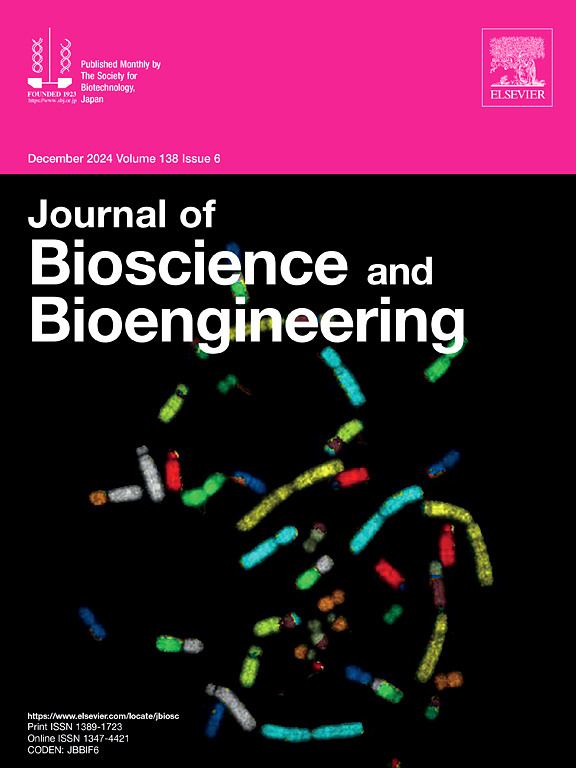Yeast diversity during the spontaneous fermentation of wine in a winery and in a laboratory using sterilized equipment
IF 2.9
4区 生物学
Q3 BIOTECHNOLOGY & APPLIED MICROBIOLOGY
引用次数: 0
Abstract
A recent trend in some wineries is the return to using spontaneous fermentation, but it is not clear whether winery flora or vineyard microorganisms drive fermentation. We compared fungal communities during the spontaneous fermentation of wine produced in a winery and in a laboratory with sterilized equipment using three grape cultivars (Chardonnay, Merlot, and Muscat Bailey A) obtained from the same harvest. High-throughput sequencing analysis based on the ITS1 region showed that Saccharomyces cerevisiae was the dominant species in winery batches at the end of fermentation, but it was not always dominant in laboratory batches. The number of laboratory batches where S. cerevisiae reached more than 50% at the end of fermentation was only 10 of 26. Consistent with this, in the grape juice/must before fermentation, S. cerevisiae accounted for 1.71% of fungal species identified in winery batches and 0.04% in laboratory batches. In addition, in laboratory-based winemaking, juice clarification of Chardonnay and cold maceration of Merlot influenced the microbial communities observed during fermentation. Our findings suggest that S. cerevisiae present in the winery environment participates at an early stage of fermentation, leading to its dominance at the end in wine produced by spontaneous fermentation in a winery.
在酒庄和使用灭菌设备的实验室中,葡萄酒自发发酵过程中的酵母多样性。
在一些酒庄,最近的趋势是回归使用自然发酵,但尚不清楚是酒厂植物群还是葡萄园微生物驱动发酵。我们比较了三种葡萄品种(霞多丽、梅洛和马斯喀特贝利a)在同一收获的葡萄酒在酒厂和实验室用灭菌设备自发发酵过程中的真菌群落。基于ITS1区域的高通量测序分析表明,酿酒酵母(Saccharomyces cerevisiae)在发酵结束时为酿酒批次的优势菌种,但在实验室批次中并不总是优势菌种。26个实验室批次中,酿酒酵母在发酵结束时达到50%以上的批次只有10个。与此相一致的是,在发酵前的葡萄汁/葡萄汁中,酿酒酵母占酿酒批次真菌种类的1.71%,实验室批次真菌占0.04%。此外,在实验室酿酒中,霞多丽的果汁澄清和梅洛的冷浸对发酵过程中观察到的微生物群落有影响。我们的研究结果表明,酿酒酵母存在于酒庄环境中,参与了发酵的早期阶段,导致其最终在酒庄自发发酵生产的葡萄酒中占主导地位。
本文章由计算机程序翻译,如有差异,请以英文原文为准。
求助全文
约1分钟内获得全文
求助全文
来源期刊

Journal of bioscience and bioengineering
生物-生物工程与应用微生物
CiteScore
5.90
自引率
3.60%
发文量
144
审稿时长
51 days
期刊介绍:
The Journal of Bioscience and Bioengineering is a research journal publishing original full-length research papers, reviews, and Letters to the Editor. The Journal is devoted to the advancement and dissemination of knowledge concerning fermentation technology, biochemical engineering, food technology and microbiology.
 求助内容:
求助内容: 应助结果提醒方式:
应助结果提醒方式:


